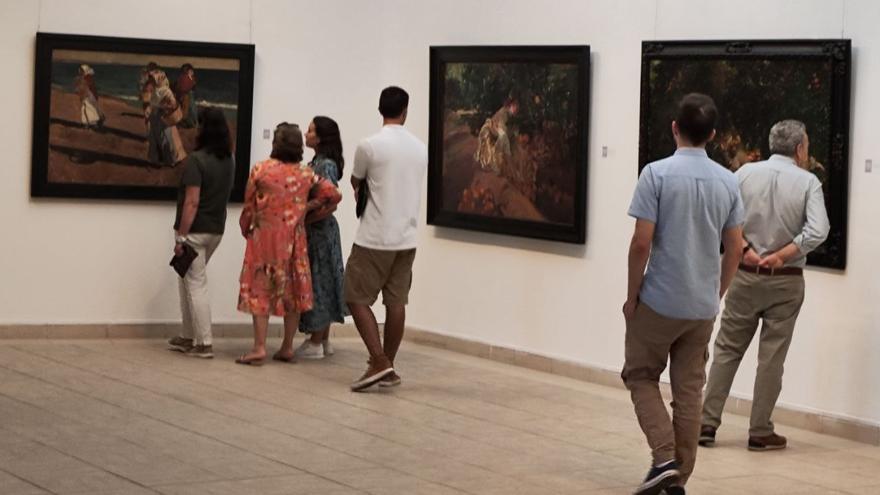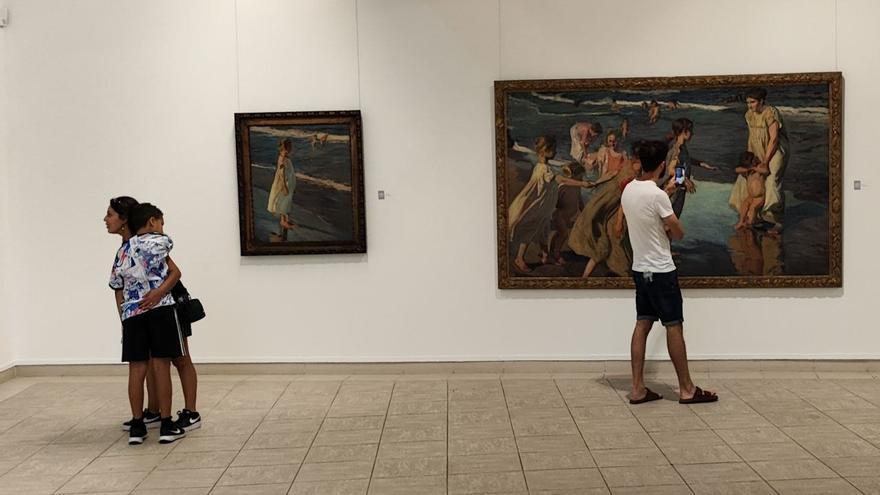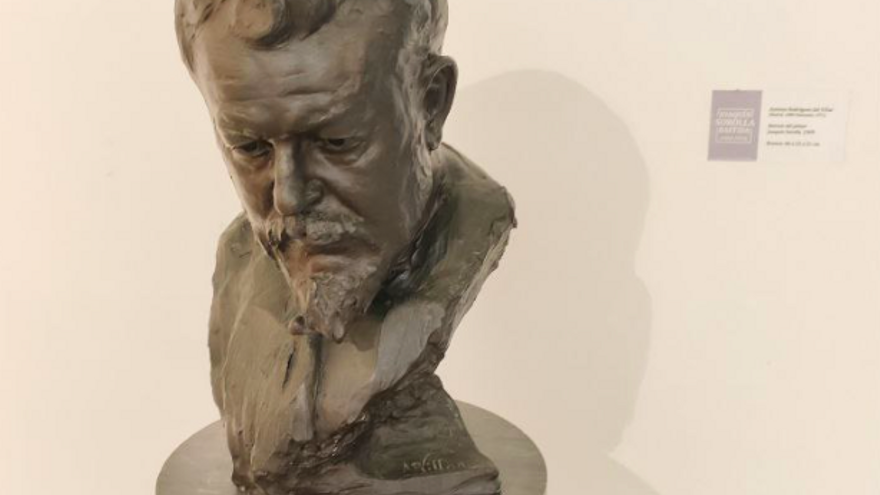
![]() 14ymedio, Havana, January 19, 2024 — Thirty paintings by Spanish artist Joaquín Sorolla (1863-1923), which the Cuban government refused to lend to Spain last April for the centenary of the artist’s death, are now on display in Havana. The exhibition, which includes major works by the artist as well as sketches and other, less significant works, will be removed on Sunday from Cuba’s National Museum of Fine Arts.
14ymedio, Havana, January 19, 2024 — Thirty paintings by Spanish artist Joaquín Sorolla (1863-1923), which the Cuban government refused to lend to Spain last April for the centenary of the artist’s death, are now on display in Havana. The exhibition, which includes major works by the artist as well as sketches and other, less significant works, will be removed on Sunday from Cuba’s National Museum of Fine Arts.
The exhibition includes important canvases such as “Summer” (1904), “Going to Sea” (1908), “The Watermelon Boy” (purchased in 1920 from Sorolla himself by the then director of the museum, Antonio Rodríguez Morey), “Portrait of the Marchioness of Balboa” (commissioned by a Cuban client in 1894) and a bust of the artist made by the Spanish sculptor Antonio Rodríguez del Villar.
Last September Sorolla’s works were moved, with little fanfare, from their usual spot in the Universal Art building to the Trocadero site, located between Zulueta and Monserrate streets. The logistics were handled by the Genesis, a state-owned company that manages galleries and sales of Cuban art to foreign buyers.

Organized by art curator Manuel Crespo Larrazábal, head of the museum’s Spanish collection, the exhibition is the island’s belated response to the centenary of Sorolla’s death. When important art galleries around the world were paying tribute to the painter in a big way, Havana reneged on a loan that it had promised to Valencia’s government eight years ago.
The reason: Fear that the legitimate owners of paintings that were seized by Fidel Castro after 1959 — specifically a family of Cuban exiles, the Fanjul Gomez-Menas — would file suit for their return from the Spanish institutions which would be exhibiting them. Carmen Amoraga, the Valencia government’s cultural director, then announced that the request had come to a dead end due to the “international situation” that had boxed the regime into a corner and that her office did not want comment on the matter.
Last April the High Court of Justice in London issued a ruling against the National Bank of Cuba in a case involving 72 million euros in unpaid debt. The Cuban government then decided not to risk further litigation over the Sorollas as happened in the 1990s when the Fanjuls filed several lawsuits in international courts in an effort to stop organized art trafficking on the island. In 2009 the family launched another legal battle, claiming violations of trade restrictions under the Helms-Burton Act, after Havana quietly lent two Sorollas to Madrid’s Prado Museum.

Amoraga has said publicly that there is a possibility, at least in theory, that the government will change its mind and allow the island’s paintings to travel to Spain as part of its Sorolla Year celebrations. That is not happeninng and, though it got off to a late start, the exhibition at the National Museum of Fine Arts confirms this.
Cuba is believed to have the third most important collection of Sorollas in the world after Spain and New York. The Valencian artist was the faovored painter of the island’s millionaires at the end of the 19th century, when he did portraits of several members of the Caribbean nobility.
In the introduction to the exhibit’s catalogue, Crespo Larrazábal explains that “Sorolla’s work was more widely collected in Cuba after the painter’s death, continuing until the 1950s.” In 1921, a work by the artist was exhibited publicly in Cuba for the first time. In regards to “Portrait of the Mexican Tiple Esperanza Iris,” however, the curator claims not to know the identity of former or current owner of the painting, which believes to be lost.
Crespo Larrazábal surmises that Cuba, which experienced a true “Sorolla fever” in the first decade of the 20th century, must have had many more examples of the artist’s work than the thirty paintings at the National Museum of Fine Arts. But given the secretive nature of the Ministry of Embezzled Assets and the personal ambitions of many of its leaders, what happened to these paintings after 1959 remains a mystery.
______________
COLLABORATE WITH OUR WORK: The 14ymedio team is committed to practicing serious journalism that reflects Cuba’s reality in all its depth. Thank you for joining us on this long journey. We invite you to continue supporting us by becoming a member of 14ymedio now. Together we can continue transforming journalism in Cuba.
